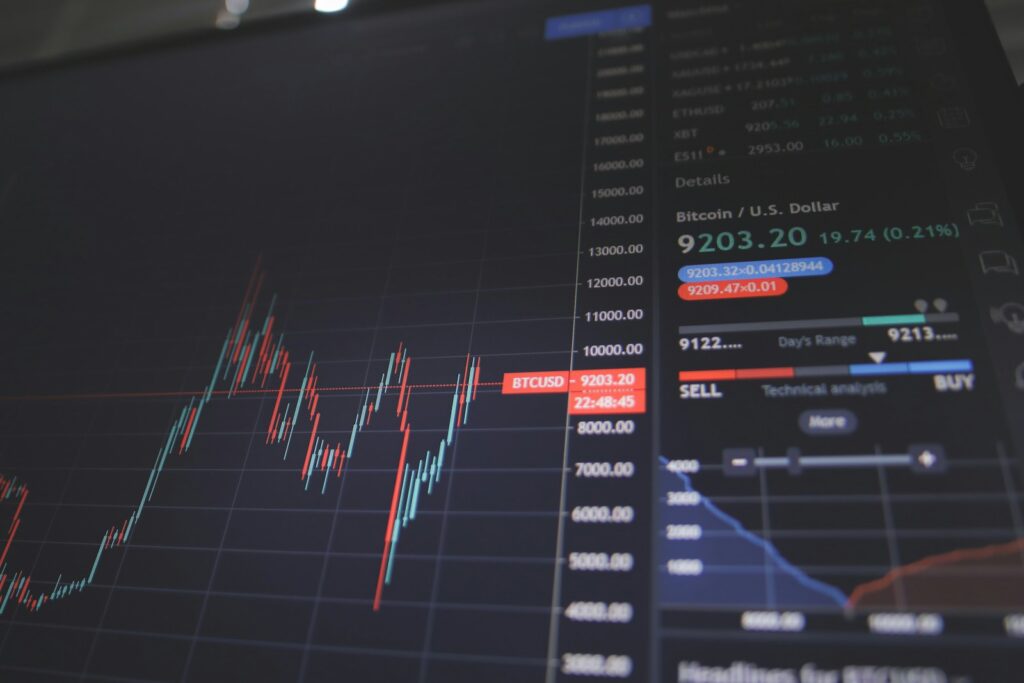Trading without indicators is like sailing blind—charts turn into guesswork, and profits slip away. Indicators are your compass, distilling price chaos into signals for entries, exits, and trends. Pros don’t use dozens—just a handful that work. With thousands out there, which ones matter? This guide cuts through the noise, spotlighting the top five indicators every trader needs to master. From stocks to crypto, these tools sharpen your edge—let’s unlock them.
Why Indicators Matter
Price moves fast—indicators slow it down, revealing patterns the naked eye misses. They confirm hunches, filter noise, and flag opportunities. A 2021 study showed traders using technical tools beat gut-traders by 20% annually. But more isn’t better—five solid indicators beat 50 half-learned ones. These five are battle-tested, versatile, and simple. Know them, and you’re ahead of 80% of the pack.
Indicator 1: Moving Averages (MA)
What It Is: Moving averages smooth price data into a trendline—simple (SMA) averages all points; exponential (EMA) weights recent ones more. Think 50-day SMA or 20-day EMA.
Why It’s Gold: MAs show direction—above the line, it’s bullish; below, bearish. Crossovers (e.g., 50-day crossing 200-day) signal shifts—the “Golden Cross” sparked Bitcoin’s 2017 run. In 2020, the S&P 500’s 50-day MA held as support, guiding buys.
How to Use It: Plot a 50-day and 200-day SMA on TradingView. Buy when the short crosses above the long; sell when it dips below. Pair with volume—weak crosses flop. Start with daily charts—cleaner signals.
Indicator 2: Relative Strength Index (RSI)
What It Is: RSI measures momentum on a 0-100 scale—over 70 is overbought, under 30 is oversold. It’s a 14-period default, tracking speed of price moves.
Why It’s Gold: RSI spots reversals—overbought Tesla at 75 in 2021? It dropped 20%. Oversold at 25 in 2022? It bounced. Divergences (price up, RSI down) scream trend fatigue—pro scalpers love this.
How to Use It: Add RSI to your chart—watch 70/30 lines. Sell at 75+ with a bearish candle (e.g., Shooting Star); buy at 25- with a bullish one (e.g., Hammer). Test 7-period RSI on 1-hour crypto charts—faster signals.
Indicator 3: MACD (Moving Average Convergence Divergence)
What It Is: MACD tracks momentum with two EMAs (12 and 26) and a signal line (9). Line crosses and histogram bars show trend strength—above zero is bullish, below is bearish.
Why It’s Gold: MACD nails timing—cross above signal? Buy. Below? Sell. In 2023, Ethereum’s MACD cross at zero flagged a 30% rally. Histogram spikes confirm power—weak bars warn of fakes.
How to Use It: Plot MACD on a daily chart. Buy when the MACD line crosses up through the signal; exit when it crosses down. Watch zero-line flips for big trends—pair with RSI for double confirmation.
Indicator 4: Bollinger Bands
What It Is: Bollinger Bands wrap a 20-day SMA with upper and lower bands (2 standard deviations). They widen in volatility, tighten in calm—price hugs them like a rubber ball.
Why It’s Gold: Bands signal breakouts and reversals—price tagging the upper band in 2021’s Bitcoin surge? Overstretched, it fell. Tight bands in 2022? Explosion coming. Squeezes predict big moves—pros pounce.
How to Use It: Add Bands to a 4-hour chart. Buy when price breaks above the upper band with volume; sell below the lower. Tight bands (squeeze)? Wait for the breakout—check MACD for direction. Avoid choppy markets—false signals sting.
Indicator 5: Volume
What It Is: Volume counts traded shares or coins—bars at your chart’s base. High volume confirms moves; low volume doubts them.
Why It’s Gold: Volume’s the lie detector. A 2020 Apple breakout on huge volume hit 20%; a low-volume fake fizzled. In crypto, pumps without volume crash—think 2021 Dogecoin flops. It’s the backbone of every indicator.
How to Use It: Overlay volume on any chart. Big price move with spiking bars? Trust it—buy or sell. Weak volume on a breakout? Sit out. Pair with MAs—50-day cross plus volume surge is a green light.
Why These Five?
Versatility and simplicity. MAs show trend, RSI flags momentum, MACD times entries, Bands catch volatility, Volume confirms it all. They work solo or teamed—stocks, forex, crypto, any timeframe. A 2022 trader poll ranked these top for consistency—pros lean on them daily.
How to Master Them
Start Simple: Pick one—say, 50-day MA. Plot it on SPY (S&P 500 ETF), daily chart. Did crossovers work last year? Test RSI next—spot oversold buys.
Layer Up: Combine—MA cross with RSI under 30 and volume spike? Power signal. Demo it on Binance—$100 fake cash, 20 trades.
Practice: Log results—wins, losses, tweaks. Fifty reps per indicator builds instinct. Free tools—TradingView, Thinkorswim—make it easy.
A 2019 study found 100 hours of indicator practice doubled win rates. Reps beat theory.
Real Wins Prove It
In 2020, RSI called Tesla’s $400 bottom—buyers who paired it with volume rode to $900. MACD flagged Bitcoin’s 2021 $30,000 bounce—30% gain in weeks. Bollinger squeezes tipped 2022’s ETH breakout—smart traders banked 50%. These aren’t guesses—they’re tools at work.
The Catch: No Holy Grail
Indicators lag—price moves first. False signals hit in choppy markets (e.g., 2022 sideways stocks). A 2021 report showed 30% of signals fail—context matters. Pair with candlesticks (e.g., Doji at RSI 70) and news—earnings, Fed moves. They’re guides, not gods.
Mindset: Trust but Verify
Pros don’t blindly follow—MACD says buy, but volume’s flat? Pass. Indicators hint; you decide. Doubt every signal till it proves itself—discipline trumps hope. You’re the captain; they’re the map.
Your Next Step
Today: Open TradingView—free. Plot a 50-day MA on Apple, daily. Did it signal last month’s trend? Add RSI—overbought now? Test a $100 demo trade—buy at MA support, sell at RSI 70. Log it—did volume back it? One step, one win.
These five indicators turn chaos into clarity. Master them—trend, momentum, timing, volatility, confirmation—and you’ll trade like the pros. The market’s yours if you read it right.
Disclaimer: Trading involves risks. Past signals don’t guarantee future gains. Consult a pro before acting.




